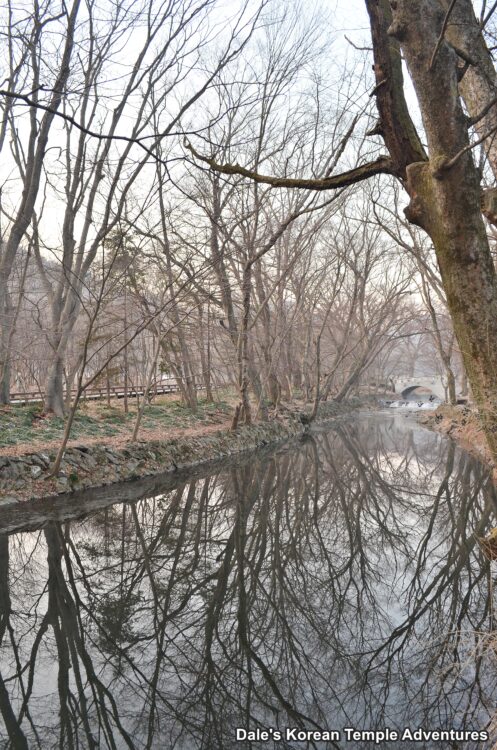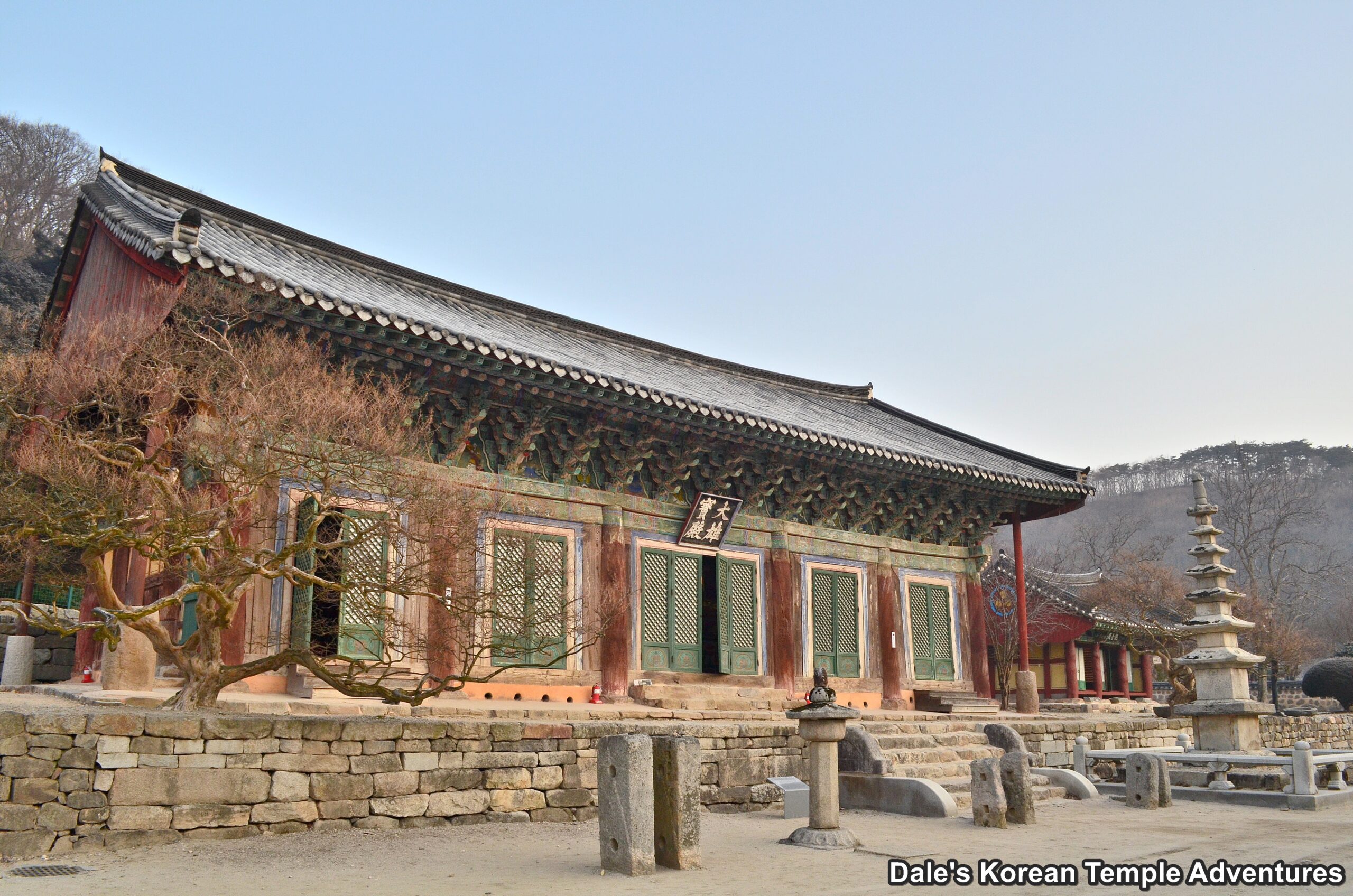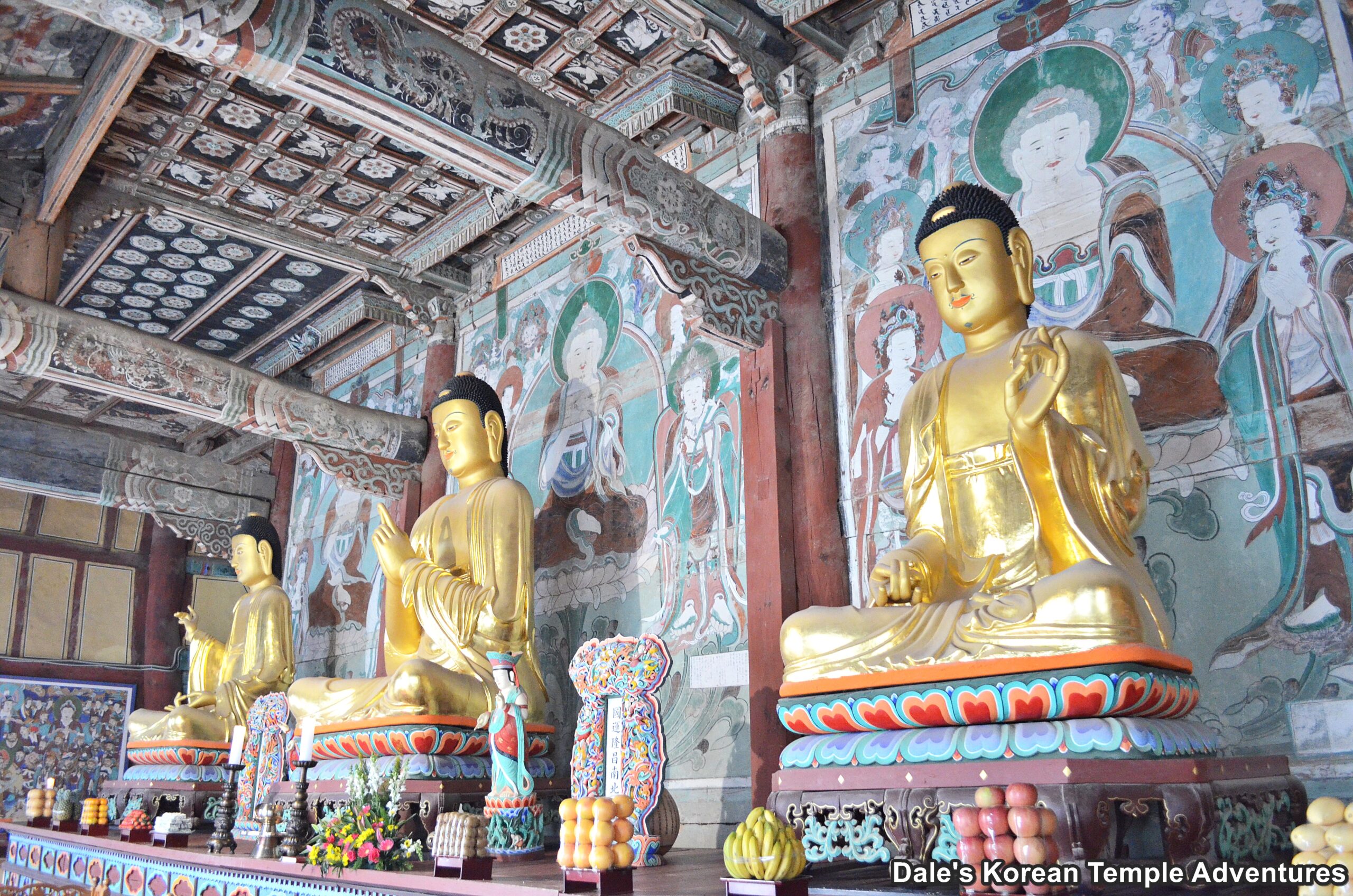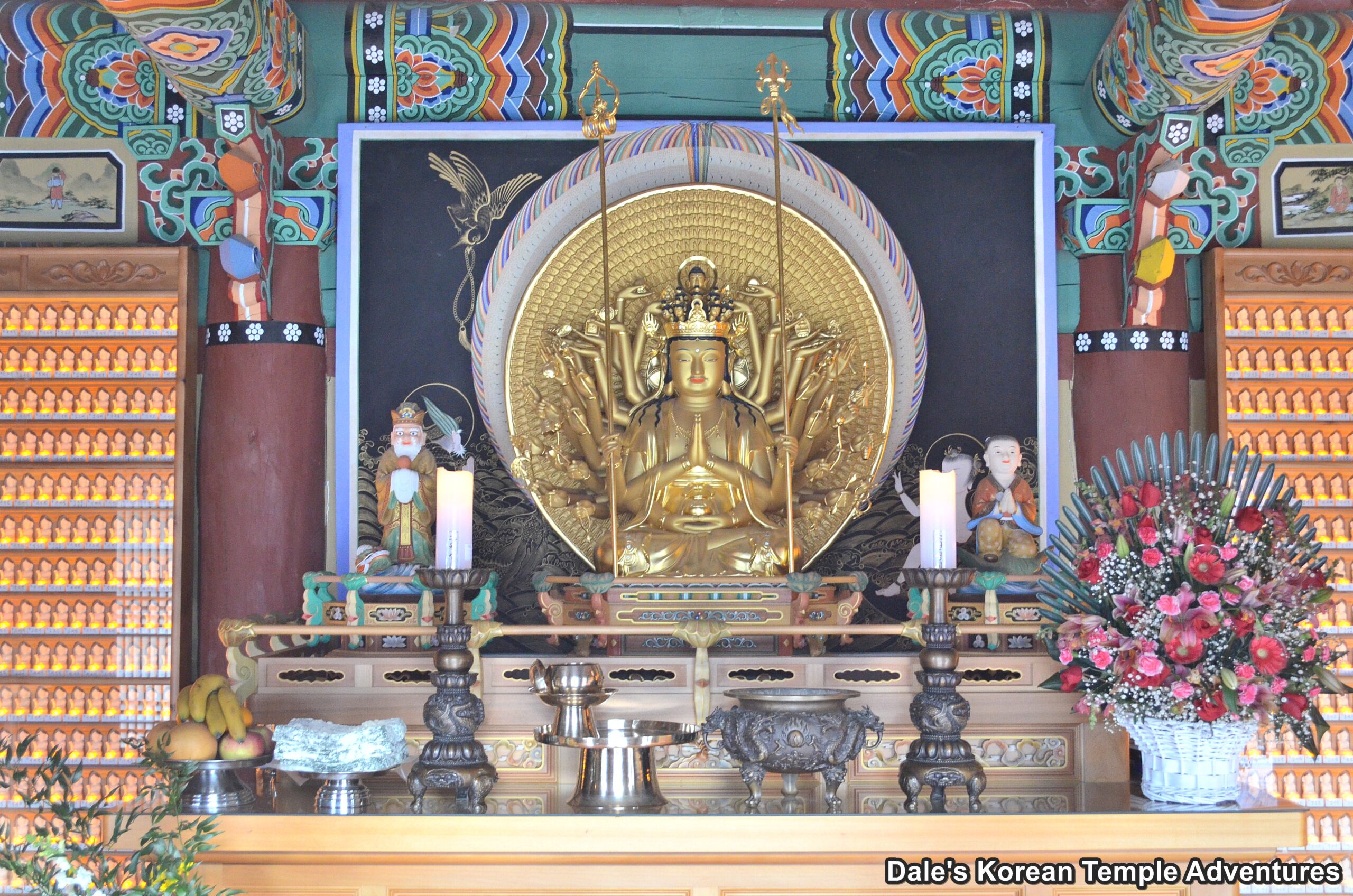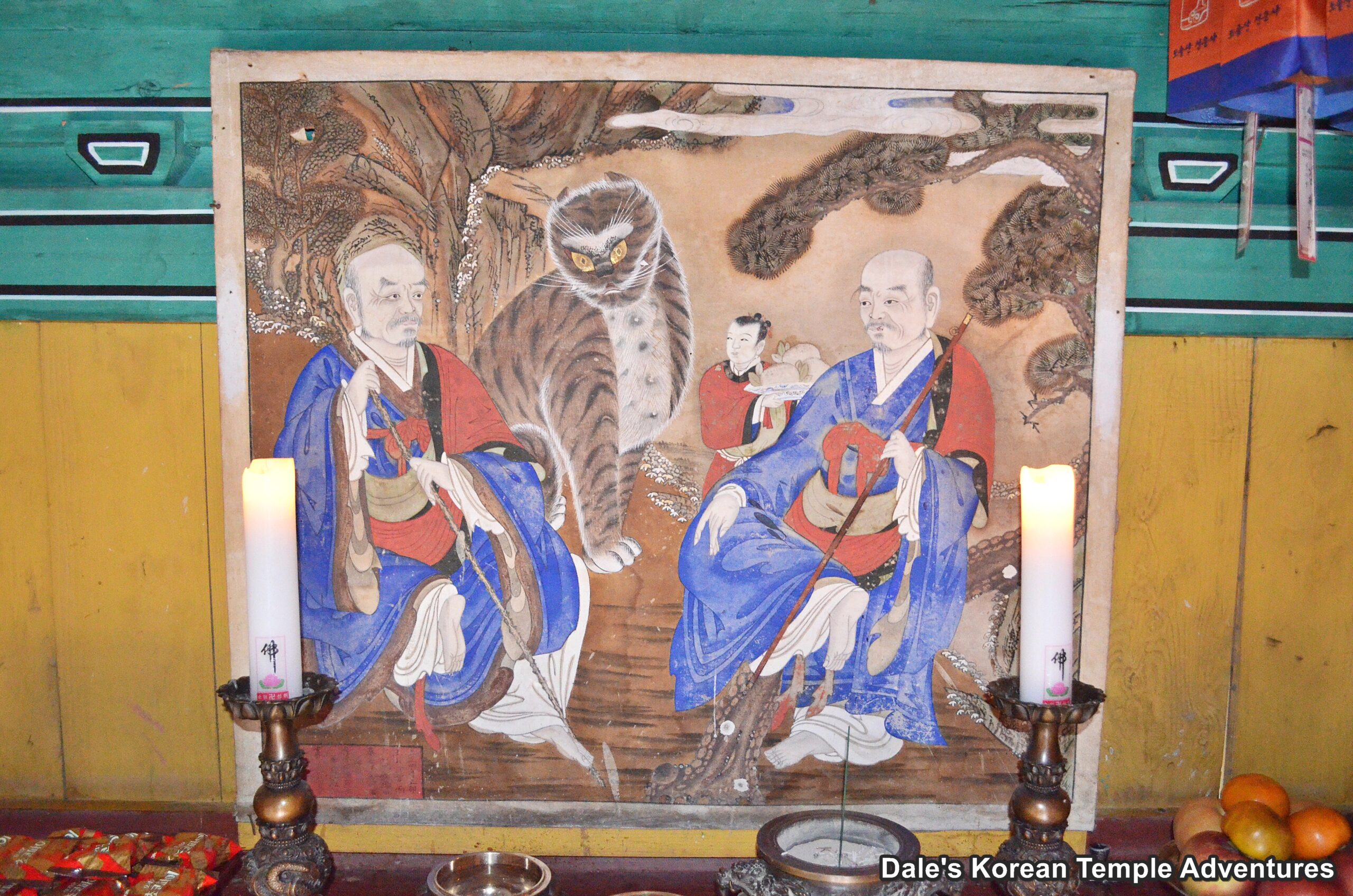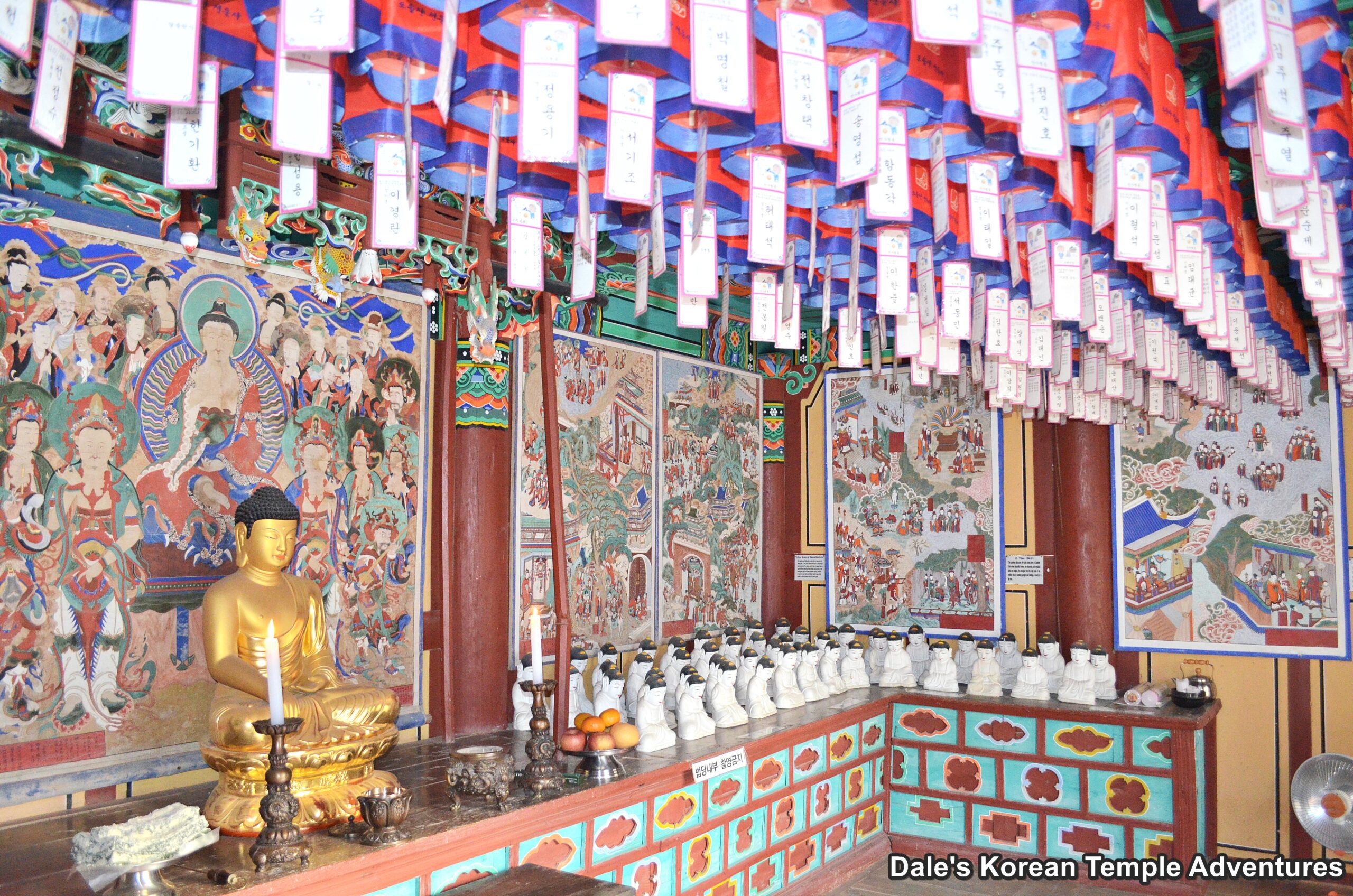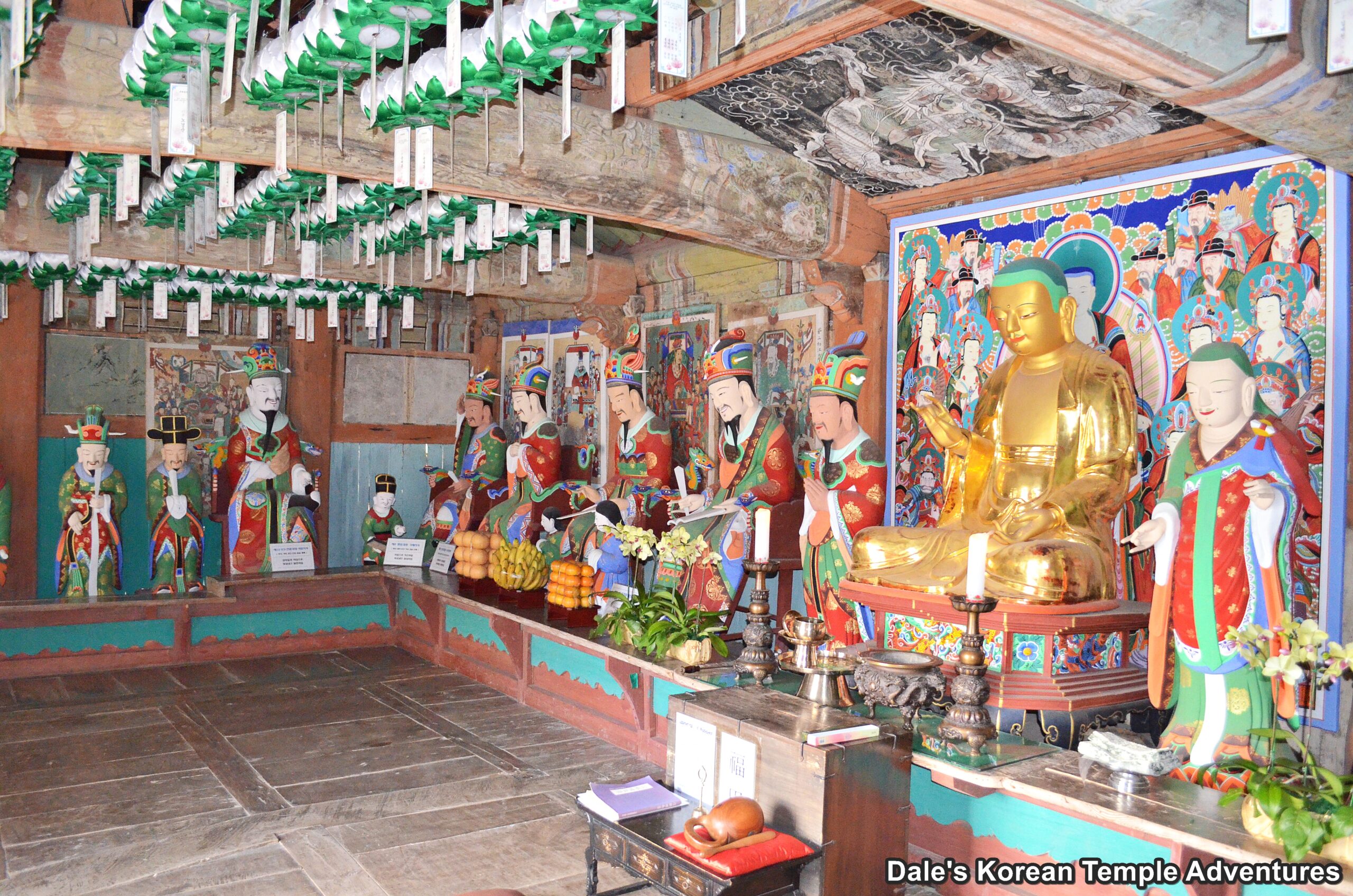Seonunsa Temple – 선운사 (Gochang, Jeollabuk-do)
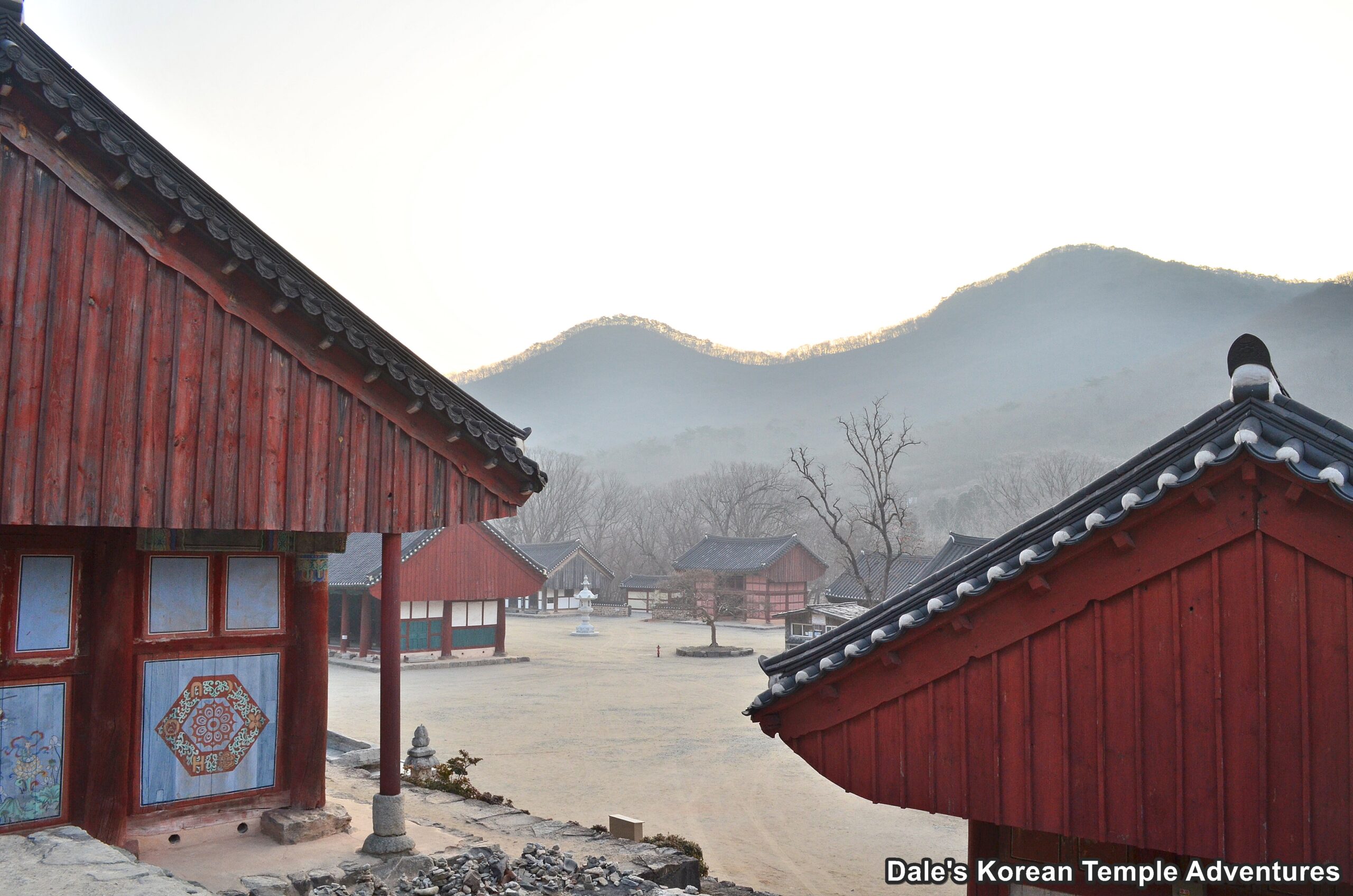
Temple History
Seonunsa Temple, which is located in Gochang, Jeollabuk-do, means “Seon [Zen] Cloud Temple,” in English. The name of the temple implies how profound wisdom is found by staying in the clouds in the boundlessness of Seon meditation. Seonunsa Temple was first built in 577 A.D. by the monk Geumdan-seonsa of the Baekje Kingdom (18 B.C. to 660 A.D.). There are three myths about the founding of Seonunsa Temple. The first myth centres around the idea that King Jinheung of Silla (r.540 – 576 A.D.) spent the night in a cave on Mt. Dosolsan, which is where Seonunsa Temple is located on the northern foot of the range. King Jinheung of Silla spent the night in the cave on Mt. Dosolsan after abdicating his throne. During his cave stay, King Jinheung had a dream of a Mireuk-bul (Future Buddha) triad coming out of a rock. This triad was leading him towards establishing a temple called Jungaesa Temple, which was the origin of Seonunsa Temple. Furthermore, and according to this myth from the “Seonunsa Sajeok-gi,” or “Seonunsa Temple Records,” in English, that was compiled by Im U-sang in 1794, King Jinheung of Silla also established the nearby Jungaeam Hermitage for the soul of Princess Jungae, and Dosoram Hermitage for the soul of Queen Consort Dosol. However, because there was fierce fighting at this time between the Baekje and Silla Dynasties, especially around this part of the peninsula, this myth seems like a bit of a stretch.
Another creation myth surrounding the founding of Seonunsa Temple involves Geomdan-seonsa, again. In this second creation myth, it’s believed that the monk master was in the process of expelling dragons from a big pond using charcoal and big rocks when a serious eye disease broke out in the neighbouring village. The monk told the local villagers that if they themselves poured one bag of charcoal into this pond that they would be healed. People rushed to the pond with their bags of charcoal, and the large sized pond was quickly filled. It was on this spot where the former pond once resided that Seonunsa Temple was first built.
And a third foundational myth focuses for a third time on Geomdan-seonsa. In this story, numerous war refugees from the Silla and Baekje wars lived in this part of the Korean peninsula. Geomdan-seonsa helped enlightened these war refugees through Buddhism. One of the things he did was help teach them how to bake salt. Afterwards, people brought salt to the temple every spring and fall to thank Geomdan-seonsa. These salt donations were called Boeunyeom (Gratitude) Salt. The local village was called Geomdan-ri after the beloved Buddhist monk. Interestingly, and until recently, because of the proximity to the sea, people of Geomdan-ri produced salt. This is a tangible example that might be plausible enough as to how Seonunsa Temple was first founded.
Seonunsa Temple would eventually fall into disrepair until it was restored by the monk Hyojeong-seonsa in 1354. Seonunsa Temple would be rebuilt again in 1474 by the monk Haengjo-seonsa. The temple would continue to expand until the Imjin War (1592-1598). Much like neighbouring Geumsansa Temple in Gimje, Jeollabuk-do, Seonunsa Temple was completely destroyed by fire during the second invasion of the Imjin War. Finally, in 1614, the temple was rebuilt through the efforts of then local governor of Mujang County, Seong Seok-jo. Over a five year period, Seonunsa Temple was restored to its former glory.
Seonunsa Temple, and the handful of hermitages that surround it, is home to six Korean Treasures, one Scenic Site, and two Natural Monuments.
Temple Layout
The hike towards Seonunsa Temple is long, but it’s a beautiful one, as well. You first pass by the stately Iljumun Gate and make your way up the temple trail that runs next to a wandering stream. The temple is also well known for its camellia trees and the flowers that bloom on them. In fact, there’s a forest of camellia trees at Seonunsa Temple that are Korean Natural Monument #184. The entire trail that leads up to the temple grounds are lined with these beautiful pink/red blossoming trees. Halfway up the trail, you’ll notice a large Budo-won, or “Stupa Garden,” in English, to your right. The numerous stupas are situated in a lush grove of mature trees.
Further up the trail, you’ll finally arrive at a beautiful bridge that spans the serene stream. Straight ahead is the large Cheonwangmun Gate with snickering statues of the Heavenly Kings inside it. After exiting this gate, you’ll emerge on the other side in the very spacious temple courtyard. To your immediate right is the Jong-ru, or “bell pavilion,” in English, and straight ahead is the Manse-ru Pavilion that obscures the rest of the temple’s grounds including the main hall, which is situated behind it.
After going around the Manse-ru Pavilion, you’ll see the large and long Daeung-jeon Hall that dates back to 1613. Originally, it had been built in 1472; however, it was destroyed by the Japanese in 1592 during the Imjin War. The interior of the Daeung-jeon Hall is beautifully adorned with various murals like dragons, Gwimyeon (Monster Masks), and heavenly flowers and Bicheon (Flying Heavenly Deities). The Daeung-jeon Hall is Korean Treasure #290. As for the triad of statues that rest on the main altar, it’s centred by Birojana-bul (The Buddha of Cosmic Energy). And to the right and left are Yaksayeorae-bul (The Medicine Buddha, and the Buddha of the Eastern Paradise) and Amita-bul (The Buddha of the Western Paradise). This triad dates back to the reign of King Injo of Joseon (r.1623-1649). Each of the statues has an imposing physique with broad shoulders, long waist, and large knees. This design was popular at this time after centuries of suppression under early Joseon Dynasty rule and the role that Confucianism played in the suppression of Buddhism. It wasn’t until the support and fighting of the Righteous Army (warrior Buddhist monks) during the Imjin War that the situation for Korean Buddhism drastically changed. This was done by the government officially recognizing the contribution that these warrior monks did in defending the peninsula against the invading Japanese. So that’s why you see, instead of diminutive statues, you see powerful and imposing images of the Buddhas not only at Seonunsa Temple being created but at other temples like at Beopjusa Temple in Boeun-gun, Chungcheongbuk-do and Songgwangsa Temple in Wanju, Jeollabuk-do. The triad at Seonunsa Temple is Korean Treasure #1752.
In front of the Daeung-jeon Hall is a seven-story stone pagoda that dates back to the Goryeo Dynasty (918-1392). Originally, this pagoda stood nine stories in height, but through damage and age, it’s been reduced to seven. To the right of the Daeung-jeon Hall, and the seven-story pagoda, is the temple’s Gwaneum-jeon Hall. Inside is housed a statue of Gwanseeum-bosal (The Bodhisattva of Compassion) that dates back to the early part of the Joseon Dynasty (1392-1910). The multi-headed crown of the Bodhisattva of Compassion is quite impressive in design as is the mural that backs Gwanseeum-bosal.
To the left of the Daeung-jeon Hall is where the bulk of the temple halls are situated at Seonunsa Temple. The first, and the largest of the lot, is the Yeongsan-jeon Hall, or “Vulture Peak Hall,” in English. The name of the hall refers to where the Buddha gave a sermon on the Lotus Sutra to an assembly of people. The hall dates back to 1821, and it houses three large statues dedicated to (Seokgamoni-bul) in the centre. This statue is joined by Mireuk-bul (The Past Buddha) and Yeondeung-bul (The Past Buddha). And these three large statues are surrounded on both sides by the sixteen Nahan (The Historical Disciples of the Buddha).
Directly behind the Yeongsan-jeon Hall is the temple’s Sanshin-gak Hall. This hall houses two paintings of Sanshin (The Mountain Spirit). The one to the left is the more traditional one, while the other hanging on the main altar shows two monks (twins) that became Sanshin. And to the left of the Sanshin-gak Hall is the Palsang-do-jeon Hall, which houses eight amazing murals from the life of Seokgamoni-bul (The Historical Buddha). A statue of the Buddha sits on the main altar of this hall. Just behind the Palsang-do-jeon Hall is the Josa-jeon Hall, which is dedicated to prominent monks that once called Seonunsa Temple home. And the final hall in this part of the temple grounds is the Myeongbu-jeon Hall. A large green-haired statue of Jijang-bosal (The Bodhisattva of the Afterlife) sits on the main altar of this shrine hall. And he’s joined by the Shiwang (The Ten Kings of the Underworld). And these ten statues are backed by ten older murals of themselves.
Admission to the temple is 3,000 won.
How To Get There
From the Gochang Intercity Bus Terminal, you can take a direct bus to Seonunsa Temple. The bus to Seonunsa Temple from the Gochang Intercity Bus Terminal leaves eight times a day. Also, you can catch a bus to Seonunsa Temple from Gwangju. All you need to do is board a bus from the U-Square Bus Terminal. This bus leaves four times a day.
Overall Rating: 8.5/10
The beautiful camellia trees that are everywhere at Seonunsa Temple add to the overall beauty and atmosphere of the temple. The main highlight of the temple is the main hall, the Daeung-jeon Hall, with its historic and beautiful clay statues that sit on the main altar, as well as the murals that adorn the interior of the hall. Additionally, the Sanshin murals inside the shaman shrine hall, and the variety of temple shrine halls is more than enough to keep a temple adventurer busy.

